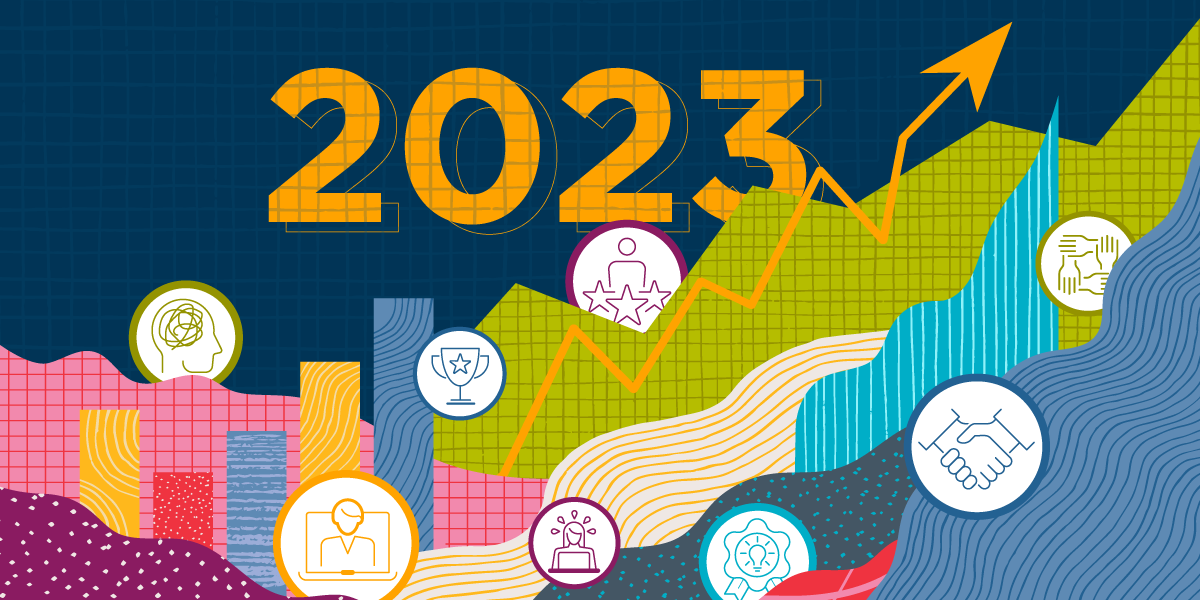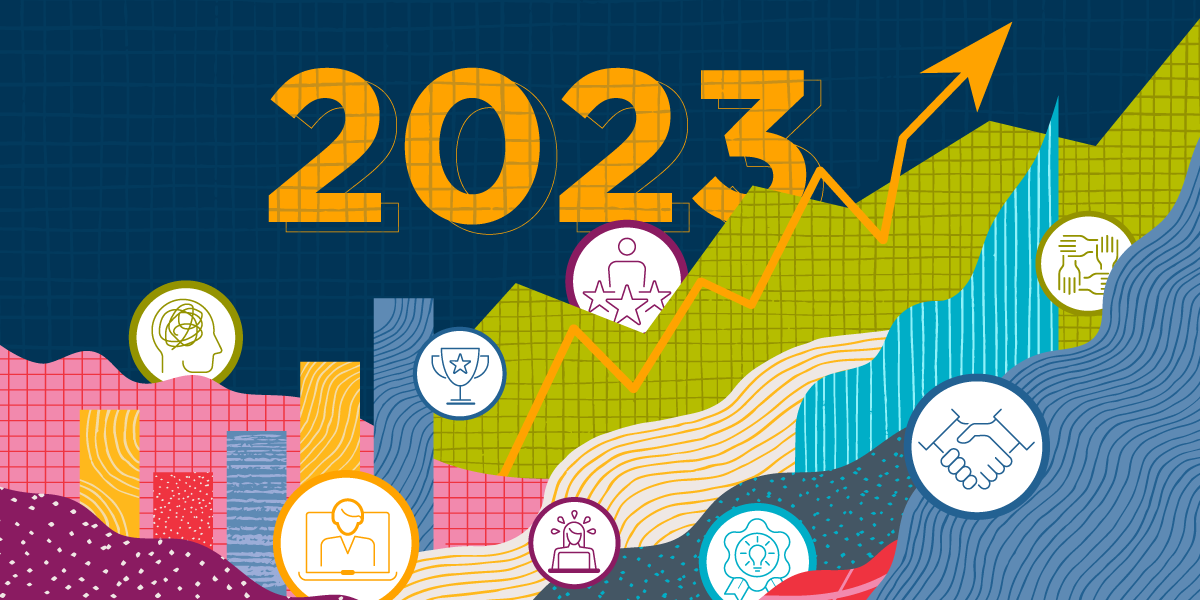Companies everywhere have been struggling to find top talent. Yet, when they do hire quality employees, they often don’t prioritize career growth or flexibility to nurture and retain their talent for the long run. A lot has changed over the past few years in the face of challenging world events, including the hot leadership topics and workforce trends that companies will need to stay ahead of to retain top talent.
What should companies prioritize in 2023 to retain and grow talent?
Each year, for the past eight years, we’ve identified trending leadership topics by examining the content shared by the 20 top influencers on Twitter. Based on this year’s analysis, the hot leadership topics identified for 2023 signal a workplace that’s shifting dramatically. This is a new era in which employees’ needs and expectations for balance and wellbeing will require companies to do more with less.
Starting with the themes social influencers mentioned most, here are the 10 hot leadership topics for 2023.
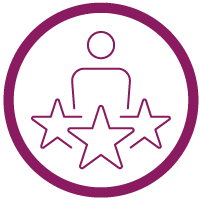
1. The struggle to create positive work cultures
Work culture has taken its biggest hit in decades. With more employees dispersed than ever before, workplaces that are traditionally in person see their talent drawn to greener pastures. There’s a risk of toxic “bubbles” building within companies that don’t consistently offer all their people the same level of flexibility or positive experiences. And this has quickly raised the stakes for what it means to be a “best place to work.”
According to more than 450 CHROs who participated in DDI’s Global Leadership Forecast 2023, workplaces will only continue to become more diverse, flexible, and dispersed, hence challenging what it means to have a unified company culture. As a result, leaders will play a more vital role in creating positive and magnetic work cultures for their teams. Leaders who are more inclusive and empathetic can not only prevent toxic cultures from emerging, but also better foster and sustain the positive work connections that help retain key talent.

2. From ideal employee experiences to real commitment
All the changes in the world outside of work have fueled a strong desire from employees to see companies commit to new ways of doing things. For many, this has seemed like a push towards sustainability that’s driving social causes, but really, it’s about getting more commitment. Employees and consumers are voicing a stronger desire to see companies embrace changes to address major challenges in business and society.
How can companies find the best path to business success while also growing a talented workforce that will want to stay with them through any challenges to come? Will more companies come to adopt a 4-day work week? There are strong signals that a reduced work schedule may better meet the needs of the modern workforce. However companies decide to move forward, they must offer more than an ideal employee experience and commit to better ways of working. People want to see real change, not go back to the old way of doing things.

3. Management—the burden fewer want to bear
A growing sense of crisis and change fatigue has been sinking in for leaders, many of whom have been overwhelmed by talent losses amidst rising inflation and costs to hire. As a result, companies are seeing an increased risk to their most critical pool of talent that can’t be satisfied only by increased pay.
Considering how crucial leadership will be to retaining all their other talent, companies must quickly prioritize leadership development and support before they take on critical losses at higher levels. This may mean extending leave time and other benefits to reduce the growing risk of burnout for leaders, who historically have been rewarded by bonuses alone.

4. Hybrid and remote teams seek stronger connections
It’s lonely out there for a lot of workers, especially those who are hybrid and don’t find connections as meaningful as companies might expect. According to a recent study on work loneliness, building lasting connections isn’t about the amount of in-person time people are exposed to. Whether employees feel lonely depends on the closeness, security, and support they get in their interpersonal relationships. This means that even an in-person or hybrid work environment could fulfill the interpersonal needs of only some and not others.
The desire to reconnect does not mean a return to working in person, except for employees who choose it. How employees connect matters more than where they connect. Developing leaders with more effective interpersonal skills will help foster stronger team connections, no matter where they work.
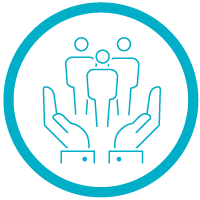
5. Shifting focus from “Great Resignation” to “Great Retention”
As companies face the reality of operating in leaner, more expensive times, they have a greater need for retaining top talent. No matter what the buzz word du jour (and there have been a lot of them this year), it’s clear there are immense pressures on HR professionals and HR leaders to find and keep their best people. For many, this is leading to a sharper focus on identifying high-potential talent and finding ways to mobilize and share their talents internally.
According to our latest Global Leadership Forecast research, only 52% of companies adequately identify and develop high-potential employees. And most don’t incentivize leaders who are willing to share and connect talented employees to other internal opportunities. This needs to change as teams and organizations get leaner. Leaders can be trained to spot and develop winning talent for their companies. When leaders have effective development discussions with their teams, they help employees visualize and navigate a successful career path at their companies.

6. The problem with productivity paranoia
Productivity surged as a hot topic this year due to the controversy over the effectiveness of remote work, and the resulting productivity paranoia of managers that ensued. Yes, there’s a disconnect between the number of employees who feel productive and the number of managers who are confident their people are productive. But the real problem is managers’ lack of trust and inability to manage expectations.
Instead of trying to better monitor productivity, managers should be setting and better managing performance expectations with their team members. Performance expectations should vary for each employee and may be very different for every team. By having these critical discussions, leaders can more consistently check in and provide clarity and feedback on employees’ performance. And the good news for hybrid and remote workers? Effective performance discussions can be as flexible as employees need them to be, since they can happen anywhere.
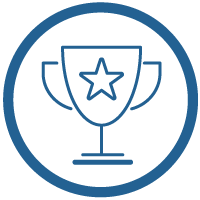
7. Power skills rise to the forefront of leadership
Influencers’ mentions of the leadership skills most needed in the workplace this year focused on a critical set of interpersonal skills (e.g., empathy, emotional intelligence, communication, influence, etc.) that have become more popularly known as “power skills.” Although they have always been important (even when painfully dubbed “soft skills”), these power skills have gained attention as the workforce has had to confront increasing change and crisis after crisis.
Leaders have had to navigate more human and personal discussions with their teams that can be challenging if power skills aren’t equipped. Leaders will need to continue to develop these skills in order to manage teams well. And it will be an advantage for companies to develop them even further. Having leaders with stronger interpersonal skills will continue to be vital in helping teams manage the changes ahead, especially when it comes to building stronger relationships in hybrid and remote teams.

8. Diverse pipelines offer a next-generation advantage
Recently, there has been heightened focus on the advantages of having stronger diversity, equity, and inclusion (DEI) practices to attract and retain talent. This has been especially true for attracting next-generation talent including Gen Z and younger Millennial workers who more strongly voice a desire to work for companies that prioritize DEI. However, many companies make the mistake of focusing their diversity efforts exclusively on their recruitment and hiring practices, without doing enough work to create an inclusive environment that enables diverse talent to stay and grow within the company.
The benefits of building a more diverse and inclusive workplace extend well beyond the current generational demographics and talent landscape, especially as concerns about global recession rise and hiring slows. To better endure an economic and hiring slowdown, companies will need inclusive leaders who can engage diverse teams and create opportunities to retain diverse talent. Setting longer-term goals around developing an inclusive and diverse pipeline of talent will help increase DEI sustainability.

9. The new employee learning imperative
Accessibility is quickly becoming an imperative in employee learning and development. Employees want to learn so that they can grow their careers, which is key to retaining talent. So, companies must be able to deliver quality learning experiences to employees anywhere—whether they are in person, hybrid, or remote.
Given that employee learning starts the moment they onboard a new company, their impressions about what learning quality they will receive can quickly take shape, not to mention their impressions of what kind of place it will be like to work at. As companies grow more flexible and dispersed, so must their learning experiences. In order to better meet employees' needs for flexibility, companies must provide great employee experiences that are equally accessible.

10. Driving innovation to shape a better future
Innovation was a topic that surged on our list towards the end of the year, and for good reason. Companies are facing critical decisions about how to successfully operate and innovate amidst growing economic concerns. The stark reality is that there’s a two-fold need for driving innovation to secure a better future.
Leaders and decision makers must grapple with how to leverage new technologies to not only transform their business, but to also connect teams and better enable their workforces. Innovation will remain important for driving new business opportunities outside, but also internally to ensure a sustainable talent pipeline that’s vital for growth.
What do these 10 hot leadership topics for 2023 mean for the future of work?
Undoubtedly, the pace of change in the world and at work will not slow down. Nearly all of the topics and trends that influencers shared this year made it clear that leaders will have to champion and stay ahead of change.
This is a time that presents companies and leaders with the opportunity to be a lightning rod for change. Although navigating concerns about employee productivity amidst the shift towards hybrid and remote work may be more challenging than comfortable, the reality is that most companies and their leaders will have to straddle a workforce comprised of both in-person and remote employees. There’s no successful way back to leading non-dispersed teams, only a way forward that builds the best of both worlds.
Companies that make their people a priority, plus foster and grow their leadership capabilities, will succeed in the uncertain times ahead. Meanwhile, their peers who don’t embrace these new workplace realities will fall behind. Either way, the challenges of tomorrow are just around the corner.
20 leadership and HR social influencers who posted content used in our topic analysis.
| Adam Grant | @AdamMGrant |
| Conor Neill | @conorneill |
| David Green | @david_green_uk |
| Ester Martinez | @Ester_Matters |
| Gautam Ghosh | @GautamGhosh |
| Gordon Tredgold | @GordonTredgold |
| Jacob Morgan | @jacobm |
| Jean Case | @jeancase |
| Jeanne Meister | @jcmeister |
| Jim Stroud | @jimstroud |
| Johnny C. Taylor Jr. | @JohnnyCTaylorJr |
| Lewis Garrad | @LewisGarrad |
| Meghan Biro | @meghanmbiro |
| Sharlyn Lauby | @sharlyn_lauby |
| Soumyasanto Sen | @soumyasanto |
| Stacy Donovan Zapar | @StacyZapar |
| Steve Boese | @SteveBoese |
| Susan LaMotte | @SusanLaMotte |
| Trish McFarlane | @TrishMcFarlane |
| Vineet Nayar | @vineetnayar |
Explore DDI's most recent research for more trends.
Stephanie Neal is director of the Center for Analytics and Behavioral Research (CABER). She leads market and trend research focused on leadership and business innovation and is the general manager and lead author of DDI's Global Leadership Forecast.
Topics covered in this blog
